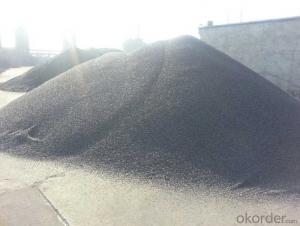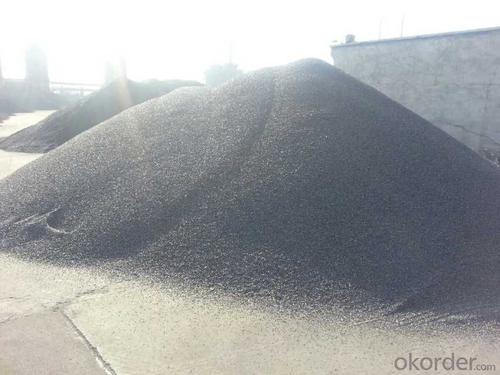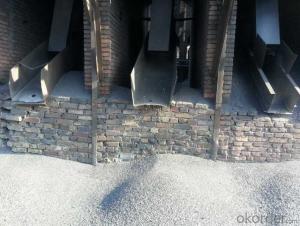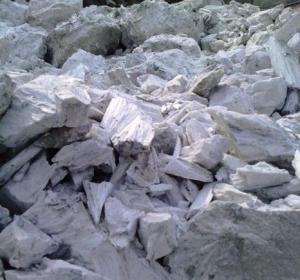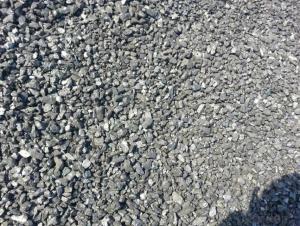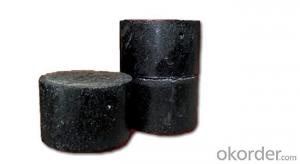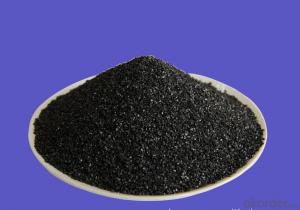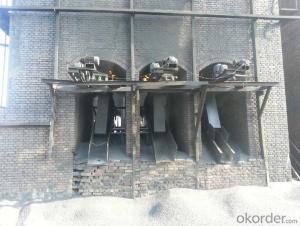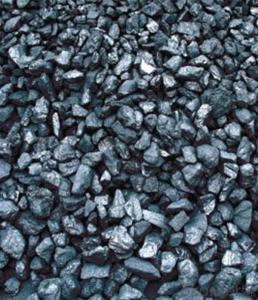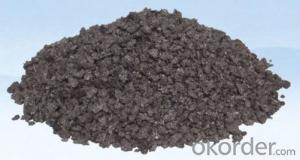FC90-95 Gas Calcined Anthracite -Low Sulphur
- Loading Port:
- Tianjin
- Payment Terms:
- TT OR LC
- Min Order Qty:
- 20 m.t.
- Supply Capability:
- 3000 m.t./month
OKorder Service Pledge
OKorder Financial Service
You Might Also Like
Packaging & Delivery
25kgs/50kgs/1ton per bag or as buyer's request
Specifications
Calcined Anthracite
Fixed carbon: 90%-95%
S: 0.5% max
Size: 0-3. 3-5.3-15 or as request
It used the high quality anthracite as raw materials through high temperature calcined at over 2000 by the DC electric calciner with results in eliminating the moisture and volatile matter from anthracite efficiently, improving the density and the electric conductivity and strengthening the mechanical strength and anti-oxidation. It has good characteristics with low ash, low resistvity, low sulphur, high carbon and high density. It is the best material for high quality carbon products.
Advantage and competitive of caclined anthracite:
1. strong supply capability
2. fast transportation
3. lower and reasonable price for your reference
4.low sulphur, low ash
5.fixed carbon:95% -90%
6..sulphur:lower than 0.3%
General Specification of Calcined Anthracite:
| FC % | 95 | 94 | 93 | 92 | 90 |
| ASH % | 4 | 5 | 6 | 6.5 | 8.5 |
| V.M. % | 1 | 1 | 1 | 1.5 | 1.5 |
| S % | 0.3 | 0.3 | 0.3 | 0.35 | 0.35 |
| MOISTURE % | 0.5 | 0.5 | 0.5 | 0.5 | 0.5 |
Pictures
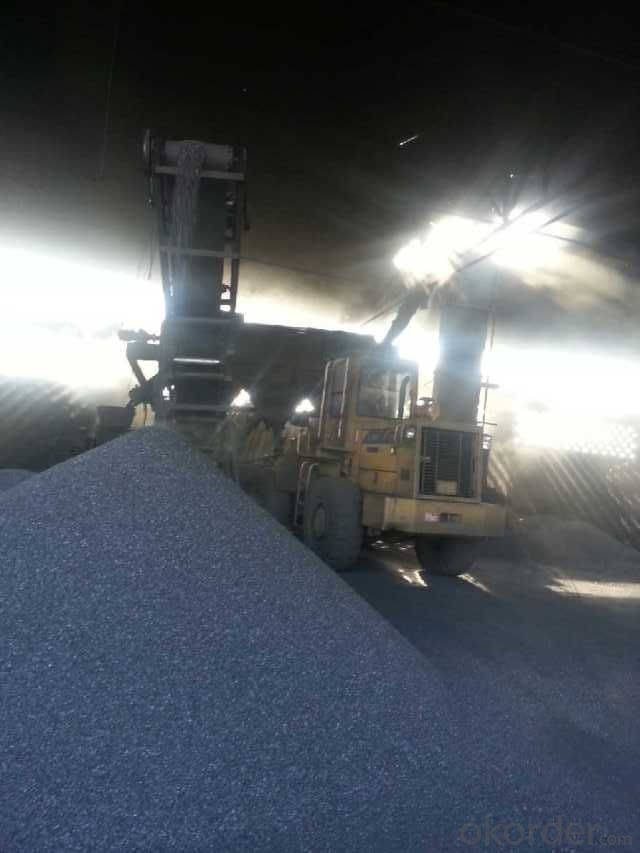
- Q: What are the potential uses of carbon nanomaterials in medicine?
- Due to their distinctive properties, carbon nanomaterials hold great promise in the field of medicine. One area where they could be utilized is in drug delivery systems. The efficient loading and release of therapeutic agents, made possible by their high surface area-to-volume ratio, enables targeted and controlled drug delivery. As a result, more effective treatments with fewer side effects can be achieved. Another potential application of carbon nanomaterials is in medical imaging. Carbon nanotubes and graphene, among others, possess excellent optical and electrical properties that can enhance imaging techniques like MRI and CT scans. This enhancement could result in improved accuracy and resolution, leading to better disease diagnosis and monitoring. Moreover, carbon nanomaterials exhibit antibacterial properties that can be harnessed for wound healing and infection control. They can effectively eliminate bacteria and prevent the formation of biofilms, which are often resistant to traditional antibiotics. This has the potential to revolutionize infection treatment, particularly for bacteria that have become resistant to antibiotics. Additionally, carbon nanomaterials hold promise in tissue engineering and regenerative medicine. Their biocompatibility, mechanical strength, and electrical conductivity make them suitable for creating scaffolds that support tissue growth and promote regeneration. They can also enhance the electrical stimulation of tissues, aiding in nerve regeneration and improving the functionality of artificial organs. Furthermore, carbon nanomaterials have been investigated for their ability to detect and monitor diseases at an early stage. Their unique electronic and optical properties can be leveraged in biosensors and diagnostic devices, enabling sensitive and specific detection of disease-associated biomarkers. While the potential applications of carbon nanomaterials in medicine are extensive, it is important to emphasize that further research and development are necessary to ensure their safety, efficacy, and long-term effects. Regulatory considerations and ethical concerns surrounding the use of nanomaterials in medicine also need to be addressed. Nevertheless, the promising capabilities of carbon nanomaterials offer hope for the future of advanced and personalized medical treatments.
- Q: Is graphite carbon?
- They are arranged in eight planes. The net shape is the diamond, which is arranged in a regular hexagon and a layer, and then graphite is formedDiamond and graphite are carbon elements
- Q: What is carbon fixation?
- Carbon fixation is the process by which carbon dioxide from the atmosphere is converted into organic compounds, primarily through photosynthesis in plants.
- Q: What is latent carbon?
- If there is already one or more chiral centers in the molecule, the chiral center of the molecule will result in a non enantiomer, for example:The C-2 2- hydroxybutyric acid is chiral, is a chiral molecule.C-3 is connected with the two hydrogen atoms of the same and two not the same group, it is a potential chiral carbon atoms. When a hydrogen atom on the C-3 is a different from the other three atoms or groups (such as OH) instead, it generates a new chiral carbon atom. This new chiral carbon atom has two opposite configuration, and the chiral carbon atoms of the original configuration is the same, so the product is replaced by the diastereoisomers, their output is not equal, is often far away.This is not directly after separation of chiral molecules in latent chiral carbon atoms into chiral carbon atoms, and generate different amounts of stereoisomers called "chiral synthesis" (chiral synthesis), also known as "asymmetric synthesis" (asymmetric synthesis).
- Q: How does carbon impact the stability of ecosystems?
- Carbon is a crucial element that plays a significant role in the stability of ecosystems. It impacts ecosystems in various ways, both directly and indirectly. Firstly, carbon is an essential component of all living organisms. It is a key building block of organic molecules such as carbohydrates, proteins, and lipids, which are vital for the growth and development of plants and animals. Carbon is the primary source of energy for organisms through the process of photosynthesis, where plants convert carbon dioxide into glucose. This energy is then passed on through the food chain, sustaining the entire ecosystem. Therefore, the availability of carbon directly influences the productivity and stability of ecosystems. Furthermore, carbon dioxide (CO2) is a greenhouse gas that is naturally present in the Earth's atmosphere. It plays a crucial role in regulating the Earth's temperature by trapping heat and preventing it from escaping into space. However, human activities, particularly the burning of fossil fuels, have significantly increased the concentration of CO2 in the atmosphere, leading to a phenomenon known as global warming. This rapid increase in carbon emissions has resulted in climate change, which has severe consequences for ecosystems. Climate change impacts ecosystems in various ways. Rising temperatures affect the distribution and behavior of species, altering their habitats and migration patterns. As a result, some species may struggle to adapt, leading to imbalances in predator-prey relationships and disruptions in the overall biodiversity of ecosystems. Additionally, climate change can cause extreme weather events such as hurricanes, droughts, and floods, which can have devastating effects on ecosystems. These events can disrupt the availability of resources, destroy habitats, and even lead to the extinction of certain species. Furthermore, increased carbon dioxide levels in the atmosphere have also led to ocean acidification. When CO2 dissolves in seawater, it forms carbonic acid, which lowers the pH of the ocean. This acidification has adverse effects on marine organisms such as corals, shellfish, and other calcifying organisms that rely on calcium carbonate to build their shells or skeletons. The reduced availability of carbonate ions in the ocean makes it harder for these organisms to form and maintain their structures, ultimately impacting the stability of marine ecosystems. In conclusion, carbon has a significant impact on the stability of ecosystems. Its availability and concentration directly affect the productivity and energy flow within ecosystems. Moreover, human-induced carbon emissions have led to climate change and ocean acidification, which pose severe threats to the balance and functioning of ecosystems. Therefore, understanding and managing carbon levels in the environment is crucial for maintaining the stability and sustainability of ecosystems.
- Q: How accurate is carbon dating?
- The scientific method known as carbon dating, or radiocarbon dating, is widely used to determine the age of organic materials that are up to 50,000 years old. It relies on measuring the ratio of radioactive carbon-14 (C-14) to stable carbon-12 (C-12) in a sample. Carbon dating has proven to be highly accurate, with a small margin of error. Its accuracy depends on factors such as the quality and preservation of the sample, the precision of measurement instruments, and understanding the carbon cycle in the past. However, carbon dating has limitations. It can only be used on organic materials that were once alive, so it is not applicable to dating inorganic materials like rocks or minerals. It is most effective for samples younger than 50,000 years old because the amount of C-14 decreases over time, making accurate measurement more challenging. To ensure accuracy, scientists often use multiple dating methods or cross-reference results with other independent techniques. This helps to verify the reliability of carbon dating and gain a more comprehensive understanding of the sample's age. Advancements in technology and calibration methods have improved the accuracy of carbon dating. For example, Accelerator Mass Spectrometry (AMS) allows for smaller sample sizes and greater measurement precision, reducing the margin of error. Calibration curves based on tree rings, or dendrochronology, also refine the accuracy of carbon dating. While carbon dating is highly reliable, it is important to recognize that no dating technique is perfect. All scientific dating methods have inherent limitations and uncertainties. However, with proper calibration and careful analysis, carbon dating remains one of the most accurate ways to determine the age of organic materials.
- Q: How does carbon affect the pH of water?
- Carbon can affect the pH of water through the process of carbonation. When carbon dioxide (CO2) dissolves in water, it reacts with the water molecules to form carbonic acid (H2CO3). This reaction increases the concentration of hydrogen ions (H+) in the water, resulting in a decrease in pH. Therefore, carbonation lowers the pH of water, making it more acidic. Additionally, carbonic acid can further dissociate into bicarbonate ions (HCO3-) and hydrogen ions (H+), which also contribute to the increase in acidity. It is important to note that the impact of carbonation on pH depends on the concentration of carbon dioxide present in the water.
- Q: How is carbon used in the water treatment process?
- Carbon is used in the water treatment process in a variety of ways. One common method is through the use of activated carbon, which is highly porous and has a large surface area. This allows it to effectively adsorb and remove impurities from water. Activated carbon is often used in the form of granules, pellets, or blocks in water treatment facilities. It can be added to the water during different stages of the treatment process. For example, during the initial filtration stage, activated carbon can be used to remove particles, such as sediment and chlorine byproducts, that can affect the taste and smell of the water. Additionally, activated carbon is effective in removing organic compounds, such as pesticides, herbicides, and industrial chemicals, that may be present in the water. These compounds can be harmful to human health if consumed, so the use of activated carbon helps to ensure the water is safe for drinking. Another way carbon is used in water treatment is through the process of carbonation. This involves the injection of carbon dioxide gas into the water, which helps to lower its pH level. Carbonation is often used in the treatment of alkaline water sources, as it helps to neutralize the water and make it more suitable for consumption. Overall, carbon plays a crucial role in the water treatment process by effectively removing impurities and improving the quality of drinking water. Its adsorption capabilities make it a valuable tool in ensuring that water is safe and healthy for consumption.
- Q: Carbon fiber refractory?
- Carbon fiber carbonization points: 1, graphitized carbon fiber cloth, can withstand 2000--3000 degrees of high temperature;
- Q: What does "carbon neutrality" mean?
- This new term comes from English, "Carbon Neutral"". At present, there is no uniform and fixed name in Chinese, such as carbon neutral, carbon neutral, carbon footprint or carbon balance. Carbon neutrality is one of the modern efforts to slow global warming. The use of this environmentally friendly way, people calculate the CO2 emissions of their daily activities directly or indirectly, and calculate the economic costs to offset the carbon dioxide required, and pay for specialized enterprises or institutions, the amount of carbon dioxide by their corresponding trees or other environmental protection projects to offset the atmosphere.
Send your message to us
FC90-95 Gas Calcined Anthracite -Low Sulphur
- Loading Port:
- Tianjin
- Payment Terms:
- TT OR LC
- Min Order Qty:
- 20 m.t.
- Supply Capability:
- 3000 m.t./month
OKorder Service Pledge
OKorder Financial Service
Similar products
Hot products
Hot Searches
